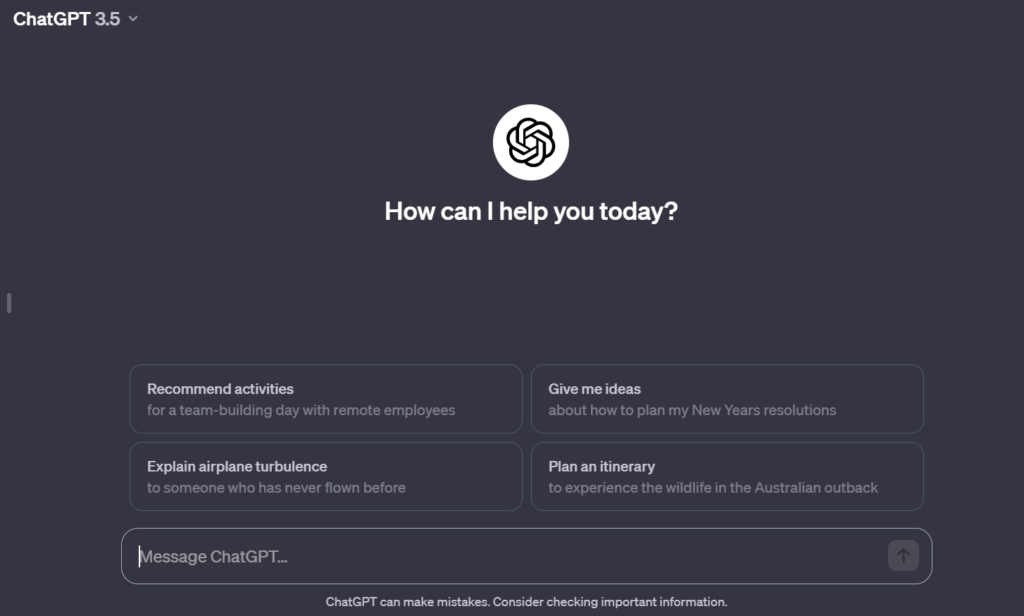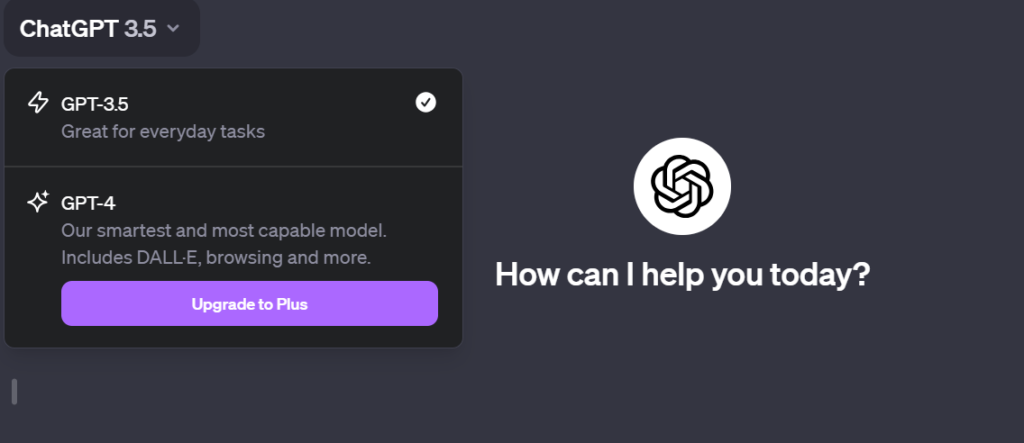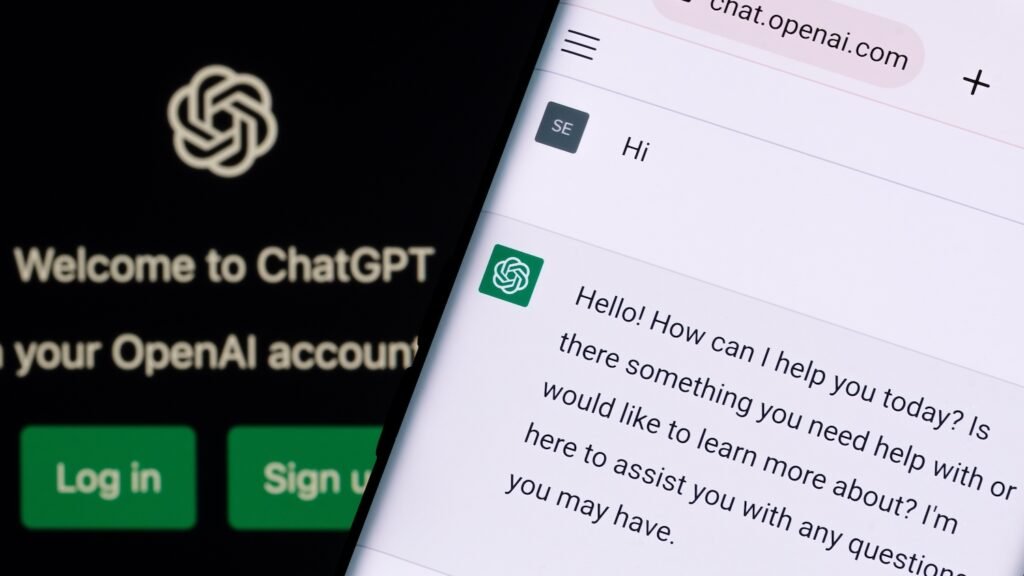Introduction to ChatGPT
ChatGPT, developed by OpenAI, is an advanced AI chatbot known for its exceptional conversational and generative capabilities. It has gained widespread adoption and has made a significant impact across various industries, showcasing its versatility and potential applications. For example, in the field of customer service, ChatGPT can effectively handle customer inquiries, provide support, and personalize user experiences based on the context of the conversation, thereby enhancing customer engagement and satisfaction. This illustrates its value in improving customer service operations.
Moreover, in the realm of content creation, ChatGPT can be utilized for generating articles, blog posts, and marketing copy. By understanding the nuances of language and context, the AI model can assist writers by providing creative prompts and content suggestions, streamlining the content creation process and increasing overall productivity. This demonstrates the potential of ChatGPT to revolutionize the way content is generated and curated in various content-centric industries.
Furthermore, the integration of DALL·E with ChatGPT opens up new possibilities for creative tasks such as designing visual content, creating artwork, and even assisting in architectural or fashion design. This multimodal capability allows users to input visual prompts and receive coherent textual and visual outputs, expanding the scope of applications for creative professionals and enthusiasts alike. The combined power of ChatGPT and DALL·E represents a leap forward in AI-assisted creativity, providing new avenues for innovation and expression in the creative arts.
The AI model has been lauded for its ability to handle diverse tasks, such as answering questions, correcting code, writing essays, summarizing books, and more. For instance, in the education sector, ChatGPT can assist students in generating summaries for research papers or aiding them in understanding complex concepts. Additionally, in the business domain, professionals can leverage ChatGPT to draft cover letters, create CVs, summarize articles, and even provide assistance with coding tasks. The versatility of ChatGPT has positioned it as a valuable tool for individuals and organizations across different fields, showcasing its adaptability and relevance in today’s digital landscape.
Furthermore, the accessibility of ChatGPT through various platforms, including desktop computers, web browsers, and mobile apps, has contributed to its widespread use and appeal [3, 4]. This accessibility ensures that users can seamlessly integrate ChatGPT into their workflows, regardless of their preferred devices or operating systems. As a result, ChatGPT has become a go-to solution for individuals seeking reliable and intelligent conversational AI capabilities, underscoring its significance in the realm of artificial intelligence and natural language processing.
Here’s a short tutorial created by ChatGPT:
Using ChatGPT is a straightforward process. Here’s a step-by-step guide to help you get started:

- Access ChatGPT. Visit the OpenAI platform or the platform that hosts ChatGPT.
- Sign In or Sign Up. If you already have an account, sign in. If not, you may need to sign up for an account.

- Read and Accept Terms. Make sure to read and understand the terms of use or any agreements provided by the platform. Accept them if you agree.

- Initiate Conversation. Look for an interface that allows you to start a conversation. It could be a chatbox or a text input area.
- Type Your Prompt. Begin by typing your prompt or question into the provided text input area. You can ask for information, assistance, or engage in a conversation.
- Receive Response. After entering your prompt, ChatGPT will generate a response. The response is based on the input you provided and the model’s training data.
- Continue the Conversation. You can continue the conversation by responding to the generated text. The model will use context from the previous inputs to generate relevant responses.
- Experiment with Prompts. Experiment with different prompts to get varied responses. You can try asking questions, seeking information, or engaging in creative dialogue.
- Explore Features. Some platforms might offer additional features like adjusting the model’s “temperature” (which influences randomness in responses) or specifying the number of tokens (words) in a response. Explore these features if available.
- Review Output. Carefully review the model’s responses. While ChatGPT is powerful, it might generate incorrect or nonsensical information at times. Use critical thinking to evaluate the responses.
- Enjoy the Interaction. Have fun exploring the capabilities of ChatGPT! Whether you’re using it for information, creative writing, or casual conversation, the model can be a versatile tool.
Understanding ChatGPT Versions

GPT-3.5 and GPT-4 are the two prominent versions of ChatGPT, each offering distinct capabilities and improvements. GPT-4, being the latest iteration, represents a significant advancement in language generation and performance over GPT-3.5. For example, GPT-4 demonstrates an increased understanding of context, allowing it to generate more coherent and contextually relevant responses. This is particularly beneficial when dealing with complex prompts that require nuanced understanding and accurate outputs. The improved language generation capabilities of GPT-4 enable it to address a wider range of tasks and conversational contexts with greater accuracy and depth, making it a valuable tool for diverse applications and industries.
One key difference between GPT-3.5 and GPT-4 lies in their ability to comprehend and respond to nuanced and multi-faceted prompts. GPT-4’s enhanced model architecture and training enable it to handle complex and layered queries more effectively, resulting in responses that demonstrate a deeper understanding of the provided context. For example, in the field of medical research, GPT-4’s improved language generation capabilities allow it to comprehend intricate medical queries, thereby aiding researchers in obtaining more accurate and relevant information from the AI model. This increased precision and contextual awareness make GPT-4 a crucial tool for addressing complex challenges across various domains, including healthcare, finance, technology, and more, setting it apart from its predecessor, GPT-3.5.
Additionally, the advancements in handling complex prompts and tasks by GPT-4 highlight its potential impact on various industries and use cases. For instance, in the legal domain, GPT-4’s improved language understanding and generation capabilities can assist lawyers and legal professionals in drafting complex legal documents, analyzing case law, and conducting legal research. The AI’s ability to comprehend and respond to intricate legal queries showcases its potential to streamline legal workflows and enhance the efficiency of legal practitioners.
Pricing and Subscription Options
Free
$0 / month
- Access to GPT-3.5
- Regular model updates
- Access on web, iOS, Android
Plus
$20 / month
- Access to GPT-4 (most capable model)
- Chat with images, voice and create images
- Use and build custom GPTs
- and includes everything in Free
Utilizing Voice and Image Inputs

When it comes to utilizing voice and image inputs with ChatGPT, users have the opportunity to engage with the AI chatbot in innovative ways. By integrating voice and image inputs, ChatGPT leverages the advanced capabilities of GPT-4V VLM and DALL·E 3, enabling users to interact with the AI in a multimodal manner. For example, users can now provide a verbal description of an image, and ChatGPT can generate a textual description of the image, demonstrating enhanced accessibility and inclusivity in communication. This multimodal capability opens up new avenues for users to interact with ChatGPT, providing a more intuitive and diverse user experience.
Moreover, the integration of voice and image inputs with ChatGPT allows for a seamless and intuitive user experience. For instance, users can submit voice messages to ChatGPT, and the AI chatbot can process the audio input to provide relevant and coherent responses. This feature is particularly beneficial for individuals who prefer voice-based interactions or those with accessibility needs, making ChatGPT a versatile tool for a wide range of users. The ability to process voice inputs and provide meaningful responses showcases ChatGPT’s commitment to inclusive and user-friendly communication methods, catering to diverse user preferences and needs.
Additionally, the visual input capabilities enabled by DALL·E 3 offer unique possibilities for creative tasks and problem-solving. Users can describe visual concepts or scenarios, and ChatGPT, in conjunction with DALL·E, can generate corresponding images or visual representations. This integration expands the scope of applications for ChatGPT, encompassing areas such as design, storytelling, and visual ideation, thereby enhancing the AI’s utility across diverse domains. The ability to generate visual outputs based on textual prompts positions ChatGPT as a valuable tool for creative professionals, educators, and individuals seeking innovative solutions to visual communication and expression.
Optimizing Prompts and Settings
When it comes to optimizing prompts and settings for better results with ChatGPT, specificity is key. Crafting specific prompts that provide clear context for the desired responses is essential. For example, when seeking assistance with coding, a well-crafted prompt could be: “Please provide a solution for the ‘Fibonacci sequence’ in Python, including the first 10 numbers in the sequence.” This clear and precise prompt sets the context for the AI to generate a meaningful and relevant response. By incorporating specific details and instructions into the prompts, users can guide ChatGPT to produce more accurate and tailored outputs, enhancing the overall user experience.
In addition to specificity, it’s important to consider the language and tone used in the prompts. Using polite language and framing questions or requests in a clear and respectful manner can lead to more coherent and courteous responses from ChatGPT. For example, instead of a demanding tone, a prompt like, “Could you please assist me in crafting a professional email response?” is likely to yield a more amiable and helpful interaction with the AI. This thoughtful approach to prompt engineering can contribute to creating a positive and engaging interaction with ChatGPT, fostering a user-centric and respectful communication dynamic.
Furthermore, understanding the nuances of the prompts and settings can significantly impact the quality of the AI’s responses. By incorporating relevant keywords and providing additional context where necessary, users can guide ChatGPT to produce more accurate and contextually appropriate outputs. For example, when seeking assistance with data analysis, including specific analytical methods or data visualization requirements in the prompt can lead to more insightful and tailored responses from ChatGPT. This targeted approach to prompt optimization ensures that the AI model comprehensively understands and addresses the user’s specific needs, resulting in more effective and valuable outputs.
Integration with DALL·E
The integration of DALL·E with ChatGPT represents a significant leap in the capabilities of the AI chatbot. By combining visual input capabilities through DALL·E’s technology, ChatGPT gains the ability to understand and respond to prompts that include visual information. For instance, users can now provide image inputs along with their text prompts, allowing ChatGPT to generate text-based descriptions or narratives based on the visual content provided. This integration is particularly valuable in fields such as design, marketing, and content creation, where visual and textual elements often go hand in hand.
Moreover, the integration with DALL·E allows ChatGPT to excel in tasks such as creative writing based on visual cues. For example, a user can input an image of a serene sunset and ask ChatGPT to describe the scene or create a fictional story inspired by the visual input. This opens up a wide array of possibilities for writers, artists, and storytellers who can now leverage the combined power of text and visual inputs to fuel their creativity and ideation process. The integration of DALL·E with ChatGPT serves as a testament to the advancement of multimodal AI capabilities, where the synergy of text and images enriches the overall user experience and output quality.
Additionally, the integration of DALL·E with ChatGPT has significant implications for industries such as e-commerce and advertising. With the ability to generate visual outputs based on textual prompts, ChatGPT becomes a valuable tool for creating compelling product descriptions, visual advertisements, and immersive brand storytelling. This integration enables businesses to leverage the combined power of AI-generated text and visuals to enhance their marketing efforts, engage customers with rich content, and drive impactful storytelling through visual and textual mediums. The potential for creative and visually engaging content creation positions ChatGPT as a valuable asset for businesses seeking innovative and impactful marketing solutions.
Importance of Training Data
Training data is the backbone of ChatGPT’s language understanding and generation capabilities. The quality and comprehensiveness of the training data directly impact the accuracy and relevance of the AI model’s responses. For instance, a well-curated and diverse training dataset allows ChatGPT to better comprehend the nuances of human language, idiomatic expressions, and contextual references, enabling it to generate more coherent and contextually relevant responses.
Furthermore, the importance of training data can be understood through an example. Consider a scenario where ChatGPT is trained on a wide range of scientific literature, technical documents, and academic papers. This diverse corpus of knowledge equips the AI model to engage in informed discussions, provide accurate explanations, and offer detailed insights on scientific topics. Conversely, if the training data were limited to a specific domain or lacked diversity, the chatbot’s responses might be less accurate and insightful in scientific discussions, underscoring the pivotal role of training data in shaping the AI’s knowledge and conversational abilities.
Moreover, the continuous refinement and expansion of ChatGPT’s training data contribute to its adaptability and relevance across various domains and use cases. For instance, by incorporating diverse and up-to-date datasets from fields such as healthcare, finance, and technology, ChatGPT can stay abreast of the latest developments and trends, ensuring that its responses reflect current knowledge and understanding. This ongoing effort to enhance and diversify the training data underscores ChatGPT’s commitment to delivering accurate, relevant, and valuable insights across diverse topics and industries, ultimately enhancing its utility for users worldwide.
Best Practices for Productive Conversations

Engaging in productive conversations with ChatGPT involves several key practices that can enhance the quality of interactions and the output received. One important aspect is to provide clear and specific prompts to ChatGPT. By crafting precise and detailed prompts, users can guide the AI’s responses to align with their expectations. This approach ensures that the AI understands the context and can offer relevant support, ultimately leading to more productive conversations.
Moreover, maintaining context throughout the conversation is crucial for productive interactions with ChatGPT. When interacting with the AI, it’s beneficial to refer back to previous exchanges or provide context for the current input. This allows the AI to maintain a coherent understanding of the ongoing conversation and respond more effectively. Additionally, providing background information or clarifying the subject matter can contribute to a more productive and insightful conversation with the AI.
Additionally, users can optimize their interactions with ChatGPT by refining their prompts based on the AI’s previous responses. This iterative approach involves adjusting prompts based on the AI’s feedback, further refining the conversation and driving it towards more valuable outcomes. By iteratively improving the prompts, users can steer the conversation in a direction that elicits more accurate and relevant responses from ChatGPT, leading to a more productive exchange of information and ideas. These best practices collectively contribute to enhancing the quality and effectiveness of conversations with ChatGPT, enabling users to derive greater value from their interactions with the AI.
Accessing ChatGPT
When it comes to accessing ChatGPT, users have a range of options at their disposal. For desktop usage, ChatGPT can be accessed via any web browser, making it a convenient choice for those working on laptops or desktop computers. By simply navigating to chat.openai.com, users can type in prompts and submit them to engage with the AI chatbot. The same holds true for both PC and Mac users, providing a seamless experience across different operating systems. Additionally, ChatGPT’s accessibility extends to mobile devices, where users can either download the dedicated app or access it through a mobile web browser. This adaptability allows individuals to interact with ChatGPT on the go, catering to the needs of a mobile-driven user base.
Furthermore, for those looking to integrate ChatGPT into their workflow more extensively, the availability of plugins offers a robust solution. However, it’s important to note that access to plugins requires a subscription plan to ChatGPT Plus or Enterprise, ensuring that users can leverage the full potential of the AI chatbot across diverse platforms and applications. Whether it’s crafting cover letters, summarizing articles, or seeking assistance in coding, ChatGPT’s accessibility on various devices and through plugins underscores its versatility and adaptability to different user needs, contributing to a seamless and user-centric experience.
Moreover, the availability of mobile apps for both iOS and Android devices further enhances the accessibility of ChatGPT, catering to a broad spectrum of users across different mobile platforms. By providing dedicated mobile applications, ChatGPT ensures that users can engage with the AI chatbot in a user-friendly and optimized manner, regardless of their choice of mobile device or operating system. This commitment to mobile accessibility reflects ChatGPT’s dedication to meeting the evolving needs of users in an increasingly mobile-centric digital landscape, ensuring seamless and intuitive interactions with the AI model.
Key Takeaways
In summary, ChatGPT offers a diverse range of applications and potential impact, spanning across various industries and use cases. The AI chatbot’s ability to handle complex tasks, generate coherent and relevant responses, and integrate multimodal inputs underscores its versatility and relevance in today’s digital landscape. By leveraging the advanced capabilities of GPT-4V VLM and DALL·E 3, ChatGPT sets a new standard for AI-assisted creativity, offering innovative solutions for creative professionals, educators, and individuals seeking to communicate and express themselves through multimodal mediums. The integration of voice and image inputs, coupled with the AI model’s advanced language understanding and generation capabilities, positions ChatGPT as a valuable tool for diverse user needs, from content creation to customer service automation, demonstrating its potential impact and value across different domains and industries.
Moreover, the availability of subscription plans tailored to different user requirements reflects ChatGPT’s commitment to providing scalable and flexible solutions for users across individual, small business, and enterprise scales. With customizable features and support geared towards diverse usage scenarios, ChatGPT aims to cater to a wide spectrum of user needs, offering a comprehensive and user-centric experience. The AI chatbot’s seamless accessibility across desktop, mobile, and plugin platforms further enhances its utility and adaptability, providing users with a versatile and convenient solution for their conversational AI needs.
Additionally, the continuous refinement and expansion of ChatGPT’s training data underscores its commitment to delivering accurate, relevant, and valuable insights across diverse topics and industries. By incorporating diverse and up-to-date datasets from various domains, ChatGPT ensures that its responses reflect current knowledge and understanding, enhancing its utility for users worldwide. The platform’s dedication to continuously improving and diversifying its training data highlights its commitment to delivering high-quality and contextually relevant outputs, contributing to a meaningful and impactful user experience.


Leave a Reply